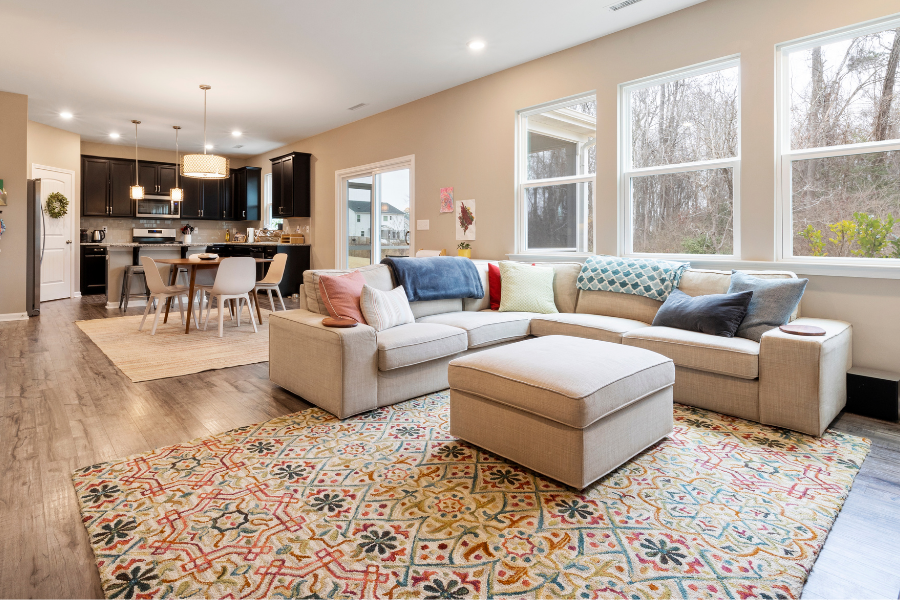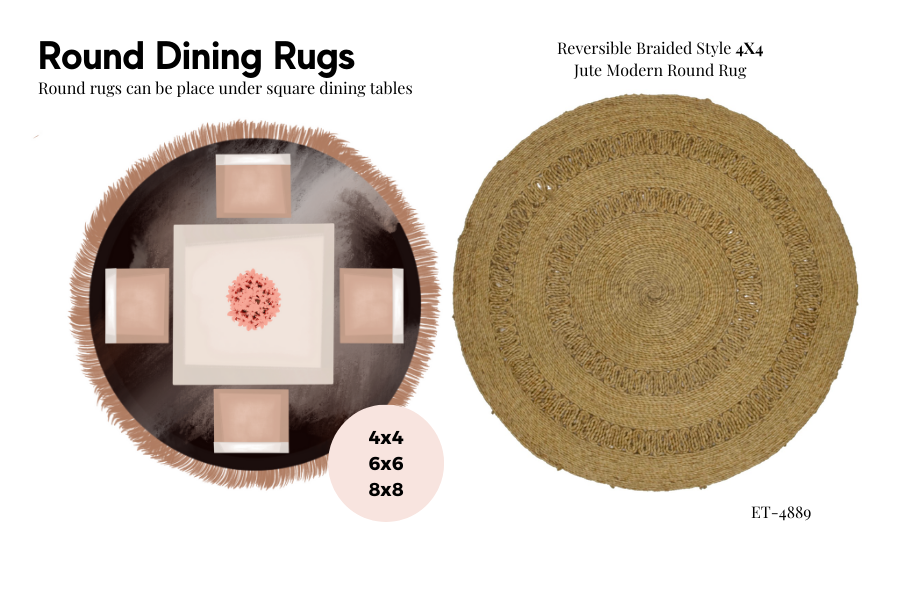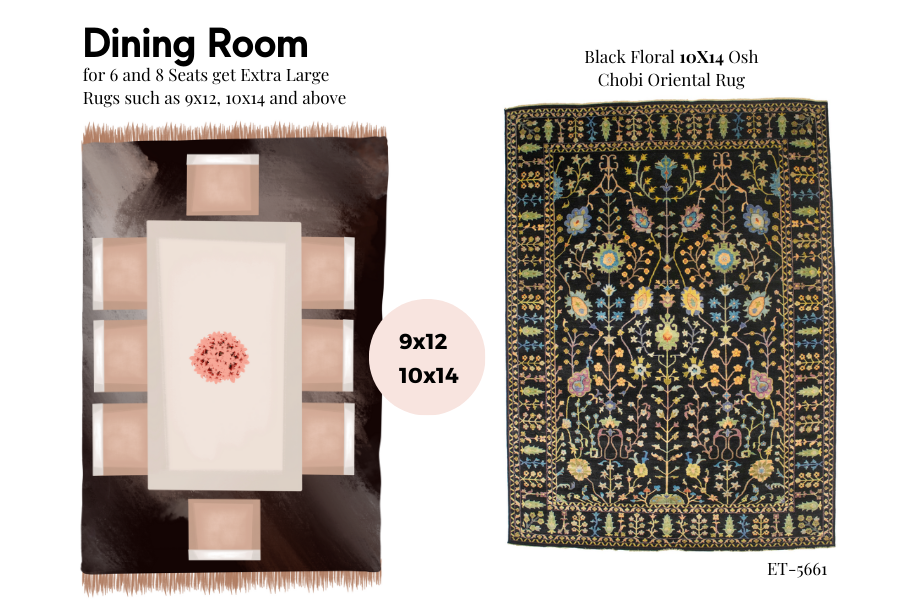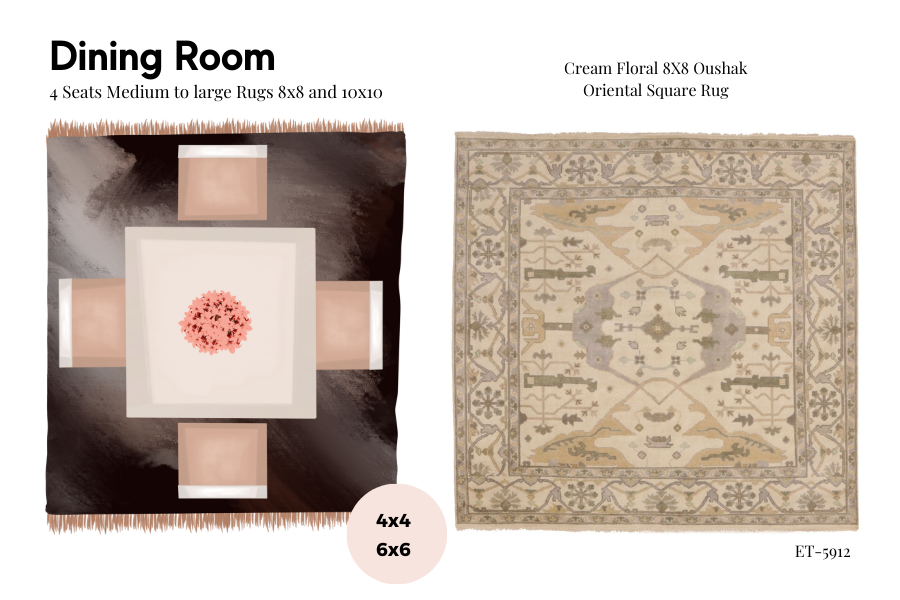
When choosing a rug for your dining room, there are a few factors to consider. First, measure the dimensions of your dining room and the size of your dining table to determine the appropriate size for the rug. The rug should be large enough to fit under the table and chairs, with at least a few inches of space on all sides.
Next, consider the style of your dining room and the colors and patterns of the other furnishings. A rug that complements the existing décor will help to tie the room together and create a cohesive look.
In terms of material, wool or synthetic fibers are good options for a dining room rug. They are durable and easy to clean, and they can withstand the heavy foot traffic that is common in a dining room. Additionally, a rug with a low pile will be easier to vacuum and maintain.
Finally, consider the shape of the rug. A rectangular rug is the most common option for a dining room, but a round rug or square rug can also work well, depending on the layout of the room and the shape of the table.
Overall, the right dining room rug should be functional, durable, and stylish, and it should enhance the overall look and feel of the space.
What Type of Rug Is Good Under a Dining Table for a Vintage home decor style?
For a vintage-style dining room, a rug with a floral or oriental pattern would be a good choice for under the dining table. These types of rugs are often found in traditional vintage décor, and they offer a classic, elegant look. They are also durable and easy to clean, which is important in a high-traffic area like a dining room.
In terms of color, a rug with muted tones, such as muted reds, greens, or blues, would complement the vintage aesthetic and add to the overall antique feel of the space. Alternatively, a rug with a neutral base color, such as beige or gray, and a bold floral pattern could add visual interest without overwhelming the space.
Overall, the key is to choose a rug that fits the overall style and aesthetic of the vintage dining room, while also being functional and easy to maintain.
Does the living room rug and dining room rug have to match?
It is not necessary for the living room rug and dining room rug to match. In fact, using different rugs in each space can add visual interest and create a more dynamic and cohesive overall design. However, if you prefer a more cohesive look, you can choose rugs that have a similar color scheme or design aesthetic. For example, you could use rugs with the same base color and a coordinating pattern, or you could choose rugs in complementary colors. Ultimately, the decision to match or not to match the living room and dining room rugs is a matter of personal preference.
What is the best material for handmade area rugs for a dining room?
The best material for handmade area rugs in a dining room is wool or synthetic fibers. These materials are durable and easy to clean, which is important in a high-traffic area like a dining room. Wool is a natural fiber that is soft and luxurious, and it is also stain-resistant and flame-retardant. Synthetic fibers, such as nylon or polypropylene, are also durable and easy to clean, and they are often more affordable than wool. Additionally, synthetic fibers are often treated with stain-resistant and antimicrobial finishes to help them withstand spills and bacteria.
In terms of style, a rug with a low pile is a good choice for a dining room, as it will be easier to vacuum and maintain. A rug with a medium or high pile may be more susceptible to crushing and staining, and it may be more difficult to clean.
Overall, wool or synthetic fibers are the best materials for handmade area rugs in a dining room, as they are durable, easy to clean, and able to withstand heavy foot traffic.
Is it good or advisable to have a rug in my dining room?
It is a good idea to have a rug in your dining room for several reasons. First, a rug can add warmth and comfort to the space, making it more inviting and comfortable for dining and entertaining. Second, a rug can also help to define the dining area and create a visual boundary between the dining space and the rest of the room. This can be particularly helpful in open-concept homes where the dining area is not clearly defined.
In terms of style, a rug can also add color, pattern, and texture to the dining room, helping to enhance the overall design of the space. A rug can be used to tie together the other elements in the room, such as the furniture and décor, and create a cohesive look.
Overall, a rug can be a valuable addition to a dining room, providing both function and style to the space.
How to measure the rug size for a dining table?
To measure the size of a rug for a dining table, first measure the dimensions of your dining table, including the length and width. Then, add at least 24 inches to each side of the table to determine the appropriate size for the rug. For example, if your dining table measures 6 feet by 4 feet, a rug that is at least 10 feet by 8 feet would be a good size.
It is important to choose a rug that is large enough to fit under the table and chairs, with at least a few inches of space on all sides. This will ensure that the chairs remain on the rug when they are pulled out from the table, and it will also create a more cohesive and finished look.
Additionally, consider the shape of your dining table and the layout of your dining room when choosing a rug size. A rectangular rug is the most common option for a dining room, but a round or square rug can also work well, depending on the shape of the table and the overall layout of the space.
Overall, the key is to choose a rug that is the appropriate size for your dining table and the layout of your dining room, while also leaving enough space on all sides for the chairs to remain on the rug when they are pulled out.




